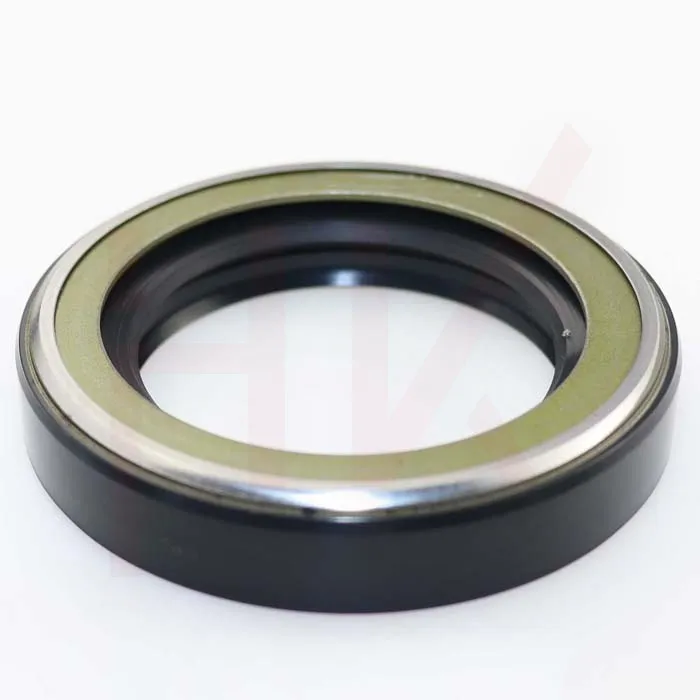10 月 . 02, 2024 04:57 Back to list
Effective Dust Seal Solutions for Enhanced Protection and Longevity of Equipment
Understanding the Importance of Dust Seals in Mechanical Design
In the realm of mechanical engineering and design, the term dust seal plays a crucial role in ensuring the longevity and functionality of various machinery and equipment. Dust seals are specially designed components that act as barriers against the intrusion of dust, dirt, moisture, and other contaminants. Their importance cannot be overstated, as they contribute significantly to the overall performance and durability of mechanical systems.
The Functionality of Dust Seals
Dust seals serve multiple purposes. Primarily, they protect critical components from particulate matter that can cause wear and tear over time. In environments where machinery is exposed to harsh conditions—such as construction sites, factories, or even natural outdoor settings—dust seals can prevent abrasive particles from entering bearings, gears, and other moving parts. This protection is essential for maintaining optimal performance and reducing maintenance costs associated with repair and replacement.
Moreover, dust seals help in retaining lubrication within mechanical systems. Lubricants are vital for reducing friction and heat generation between moving parts. If a seal fails and contaminants enter, not only does it compromise the lubrication, but it also can lead to corrosion or scoring of metal surfaces. Well-designed dust seals ensure that lubricants stay in place, thereby enhancing the operational efficiency and lifespan of machinery.
Types of Dust Seals
There are various types of dust seals available, each suited for different applications and environments. The most common types include
1. Rubber Seals These are highly versatile and provide excellent flexibility, making them suitable for a wide range of applications. Rubber seals can conform to various shapes and sizes, ensuring a snug fit that prevents dust ingress.
2. Lip Seals Featuring a flexible lip, these seals are designed to create a tight seal against the shaft or housing. They are commonly used in rotating applications, such as in automotive wheel bearings and industrial machinery.
dust seal

3. Metal Seals For applications that require higher resistance to heat and pressure, metal seals provide a robust solution. They often feature additional coatings to enhance their resistance to corrosion and wear.
4. Composite Seals These seals combine materials such as rubber and metal to leverage the benefits of both, offering increased durability and flexibility.
Selecting the appropriate dust seal involves considering factors such as the operating environment, the type of machinery, and the specific contaminants the seal must withstand.
The Role of Dust Seals in Industrial Maintenance
Effective maintenance strategy should include regular inspections of dust seals. Over time, seals can degrade due to environmental exposure, mechanical wear, or chemical interactions. Signs of wear might include visible gaps, tears, or discoloration in the seal material. By proactively replacing worn seals, organizations can prevent more significant issues from arising, such as mechanical failure or extensive downtime.
Training maintenance personnel to recognize the signs of seal degradation and understand the importance of these components can lead to more efficient operations. Additionally, organizations should leverage technology, such as condition monitoring systems, that can provide real-time data on machinery health, including the performance of dust seals.
Conclusion
In conclusion, dust seals are integral components in the design and maintenance of mechanical systems, playing a foundational role in protecting against contamination, retaining lubricants, and ensuring smooth operation. With various types available, choosing the right dust seal for a specific application is critical to maximizing the performance and lifespan of machinery. By prioritizing the maintenance and functionality of dust seals, industries can enhance operational efficiency, reduce costs, and ultimately ensure safer working environments. As technology advances and machinery becomes increasingly complex, the importance of dust seals will only continue to grow, making them a vital consideration in modern mechanical engineering.
-
The Power of Advanced Sealing: High-Pressure Solutions for Modern Machinery
NewsOct.29,2024
-
Optimizing Machinery with High-Performance Oil Seals
NewsOct.29,2024
-
Maximizing Machinery Efficiency with Advanced Oil Seals
NewsOct.29,2024
-
Ensuring Equipment Longevity with Quality Oil Seals
NewsOct.29,2024
-
Enhance Equipment Performance with Quality Oil Seals
NewsOct.29,2024
-
Custom Oil Seals for Specialized Machinery Needs
NewsOct.29,2024
-
The Role of Wiper Seals in Dust Sealing and Oil Protection
NewsOct.20,2024
Products categories
















